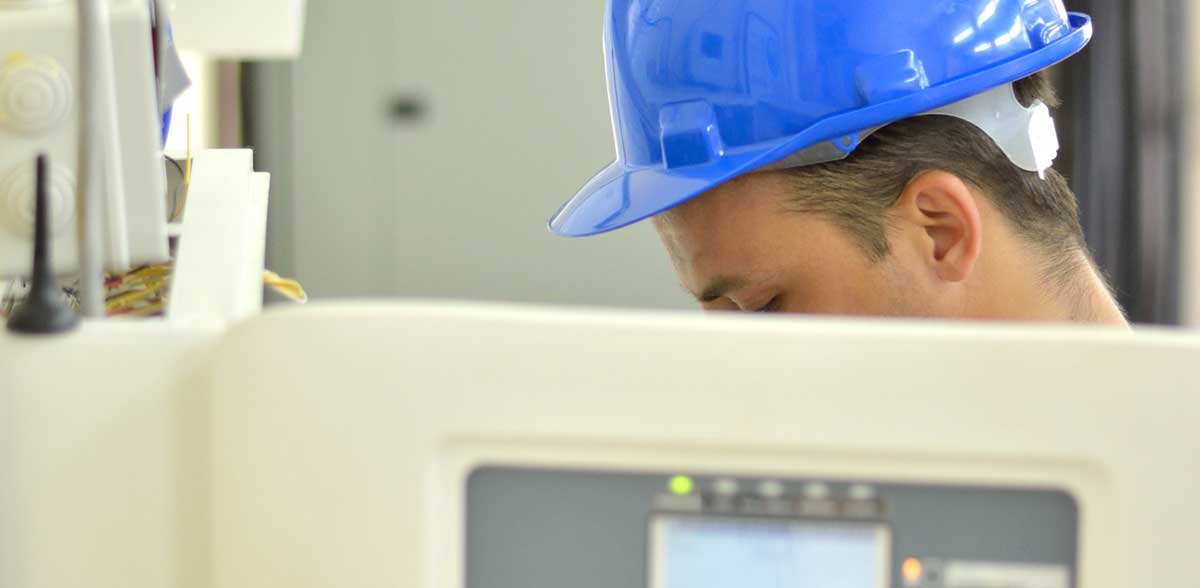Electrical Safety Studies for a Safer Workplace
By Lee Marchessault - Published on January 3, 2018 4:43 pm Employers are responsible for providing a safe work environment for their workforce. In order to make this happen, engineering studies are required, and the equipment must be examined and maintained. There are three electrical safety studies to help you determine if your electrical infrastructure is operating properly: Short Circuit Study, Coordination Study, and Arc Flash Analysis.
Employers are responsible for providing a safe work environment for their workforce. In order to make this happen, engineering studies are required, and the equipment must be examined and maintained. There are three electrical safety studies to help you determine if your electrical infrastructure is operating properly: Short Circuit Study, Coordination Study, and Arc Flash Analysis.
We first shift our attention to the basics of electricity. With knowledge of these components, there will be a better understanding of how electricity works and how to identify the hazards associated with working on electrical components.
- Voltage: The pressure that pushes electrons from the orbit of the affected atoms. This is measured in volts.
- Current: The electrons that are flowing once they have been dislodged by the voltage. These electrons flowing are what provide the work (i.e. lights to light, or elements to heat). This is measured in amperes or amps.
- Resistance: The property that stops or impedes the electrons from flowing. High resistance has atoms that hold tightly to the electrons so it would take more pressure (volts) to get electrons to flow. This is referred to as an insulator. Low resistance allows electrons to flow freely. This is referred to as a conductor. Resistance is measured in ohms with a symbol Ω.
In order to have electrons flowing and working, there must be an infrastructure of low resistance wires connected to protective devices to prevent fires from overheating, and controls which includes switches. If these devices and equipment are not properly maintained the consequences could be devastating to both equipment and people.
Short Circuit Study
Before building the electrical infrastructure, and periodically thereafter the available fault current (the high current from a short circuit or ground fault connection) must be determined. Based on this data, the equipment installed will have adequate AIC (Amps Interrupting Capacity) rating. Often, especially in older facilities, breakers and equipment are “overdutied” meaning that the rating is not high enough, so it may not operate properly and perhaps cause a catastrophic failure during a fault condition. It’s important to ensure that all equipment has the proper AIC rating. If not, it should be replaced.
Coordination Study
The next study done in the design phase is a coordination study. There are many layers of protection in the facility starting with the main switch, breaker /fuse, then to a distribution panel main breaker, and on to distribution breakers feeding other equipment with additional protective devices connected to the load being served. Five or six layers of protection are not unusual. All protective devices have a time-current curve indicating the bandwidth of current vs. time that the device will operate. Based on this bandwidth, engineers can determine how devices will operate from a fault and coordinate the timing so that the nearest protective device will operate first avoiding unnecessary major outages.
Arc Flash (Incident Energy) Analysis
Arc flash hazards can be significant. The severity of the arc flash is related to the distance the arc flash travels and the incident energy level at the worker’s position. The incident energy levels (measured in calories per cm²) are directly proportional to clearing time.
The greater the time of exposure, the more heat and pressure exposure is generated toward the worker. As discussed above, protective devices are all designed with a specific time-current curve. This information is key to determining the arc flash hazard level. If an engineer determines that the incident energy creates an arc flash of 5.2 cals/cm² to the worker based on the fault current and clearing time, but the clearing time is not accurate because the breaker is overdutied or has not been adequately maintained, the arc flash hazard may be much higher than calculated and the worker would not be adequately protected even though he/she was protected at the level listed by the engineer on the label.
To learn more about electrical safety, contact Workplace Safety Associates, Inc. today! We will help establish organizational methods of electrical safety and accident prevention tailored to your specific needs.
Lee Marchessault is the President of Workplace Safety Solutions, Inc. He began his electrical career in 1978. For more information email lee@workplacesafetysolutions.com or call 802-288-9441.
Categorised in: Arc Flash, Blog, Electricity, Workplace Safety
